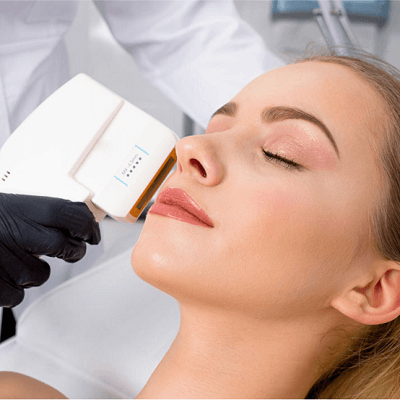In the world of modern aesthetics, achieving youthful, tighter skin no longer means going under the knife. One of the most talked-about innovations today is HIFU—High-Intensity Focused Ultrasound. For those seeking a non-surgical facelift, HIFU offers a promising solution that’s safe, effective, and requires little to no downtime.
Whether you’ve just started noticing fine lines or are looking to tighten sagging skin without surgery, HIFU Treatment Dubai could be the ideal treatment. Let's explore why more and more people are choosing HIFU for facial rejuvenation and what you need to know before scheduling your first session.
What is HIFU and How Does It Work?
HIFU stands for High-Intensity Focused Ultrasound. It’s a non-invasive cosmetic procedure that uses ultrasound energy to target the deep layers of the skin, specifically the foundational layers typically addressed in surgical facelifts.
The process involves directing focused ultrasound waves into the skin at precise depths. These waves stimulate collagen production by creating gentle heat points beneath the surface. As the body’s natural healing process kicks in, it begins to rebuild collagen, resulting in firmer, smoother skin over time.
Why Choose HIFU Over a Surgical Facelift?
One of the primary reasons people opt for HIFU is the appeal of a non-invasive treatment. There are no incisions, no scarring, and no need for anesthesia. For many, the idea of achieving noticeable lifting and tightening effects without the risks associated with surgery is incredibly attractive.
Additionally, the procedure is relatively quick. A typical session lasts between 30 to 90 minutes, depending on the areas being treated. There’s minimal to no downtime, meaning you can resume your normal activities right after your session. It’s a convenient choice for those with busy lifestyles.
Key Benefits of HIFU for Facial Rejuvenation
HIFU is gaining popularity not just for its convenience, but also for its range of benefits. Here are some of the top advantages that make it a go-to treatment for non-surgical facelifts:
Natural-looking results: HIFU stimulates your own collagen production, so the results develop gradually and look completely natural.
Long-lasting effects: Most patients notice improvements within a few weeks, with optimal results visible after 2 to 3 months. The effects can last up to a year or more depending on individual skin conditions.
Safe and FDA-approved technology: The treatment uses ultrasound energy, which has been used in the medical field for decades. It’s safe for all skin types and doesn’t damage the surface of the skin.
Precision targeting: HIFU allows practitioners to precisely target specific layers of tissue without affecting the surrounding areas, making it highly effective.
No recovery time: Unlike traditional facelifts, there’s no need to take time off work or deal with swelling and bruising.
What to Expect During a HIFU Session
Before your treatment begins, your skin will be cleansed and a gel will be applied to help the ultrasound device glide smoothly. The practitioner will then use the handheld HIFU device to deliver ultrasound energy to the targeted areas.
You may feel a slight tingling or warmth as the energy is delivered. Some people experience mild discomfort, but it's generally well-tolerated and doesn’t require pain relief.
Most sessions take under an hour, and you can return to your regular routine immediately afterward.
Post-Treatment Care and Results
One of the great things about HIFU is that it requires little to no aftercare. Some people might experience slight redness or swelling right after the session, but this usually subsides within a few hours.
It’s recommended to avoid heavy sun exposure and to follow a gentle skincare routine for the first few days. Drinking plenty of water and maintaining a healthy lifestyle can also help enhance the results.
Results typically appear gradually as new collagen forms. While you may notice an initial lift, the full benefits become more visible over time, usually within 2 to 3 months.
Is HIFU Right for Everyone?
HIFU is most suitable for individuals in their 30s to 60s who have mild to moderate skin laxity. It’s a great option for those who want to delay the need for surgical intervention or maintain the results of a previous procedure.
However, it may not be the best option for individuals with very severe sagging or extremely loose skin. In such cases, more intensive treatments may be recommended.
A consultation with a qualified provider can help determine whether HIFU is the right fit for your skin goals.
How Often Should You Get HIFU Treatments?
Most people only need one session to achieve noticeable results, but depending on your skin’s condition, a follow-up treatment may be suggested. Maintenance treatments once or twice a year can help prolong and enhance the effects.
Common Areas Treated with HIFU
While the face and neck are the most common areas treated with HIFU Treatment in Dubai, the technology can also be used on other parts of the body. Popular treatment areas include:
Forehead and brow
Jawline and chin
Neck and décolletage
Nasolabial folds
Upper arms and abdomen (in some cases)
The versatility of HIFU makes it a powerful tool for comprehensive skin tightening and rejuvenation.
Conclusion
HIFU is revolutionizing the way people approach anti-aging and facial lifting. With its non-invasive nature, natural results, and minimal downtime, it’s no surprise that this treatment is quickly becoming a favorite for those seeking a youthful, lifted appearance without surgery.





Comments